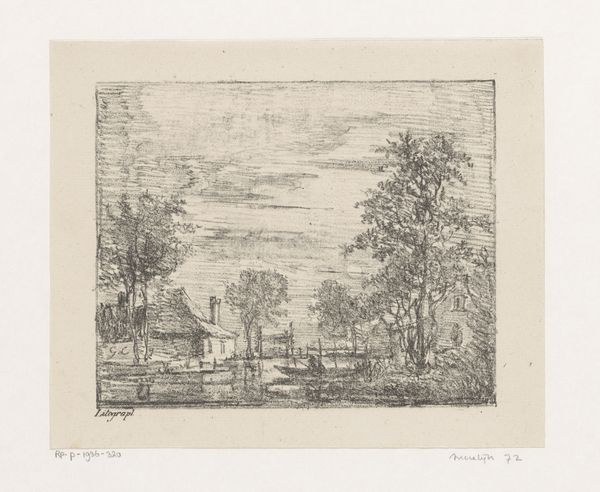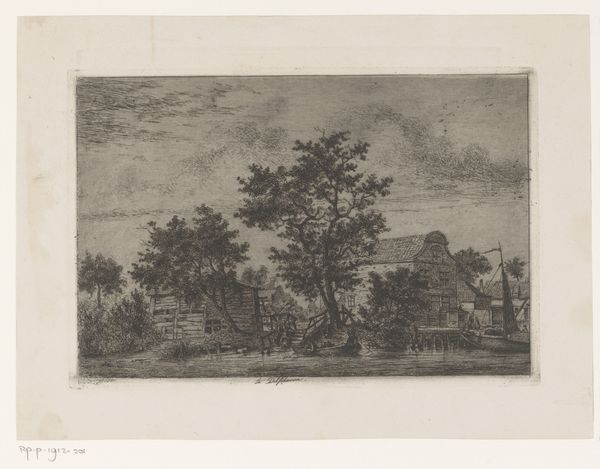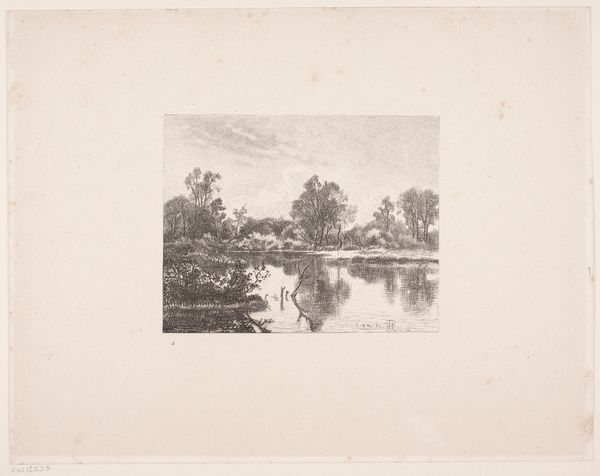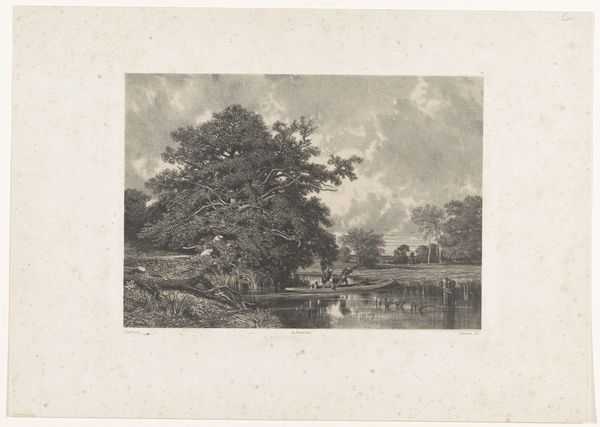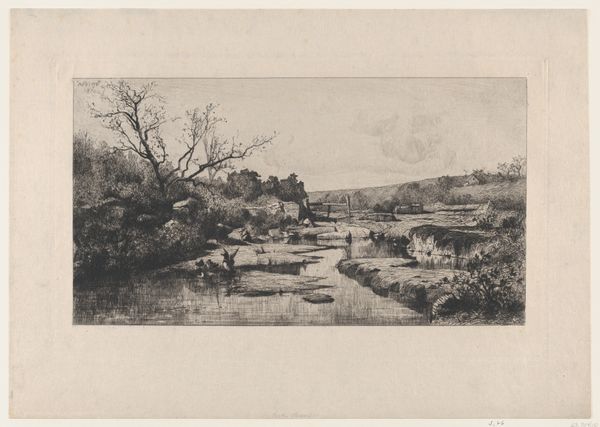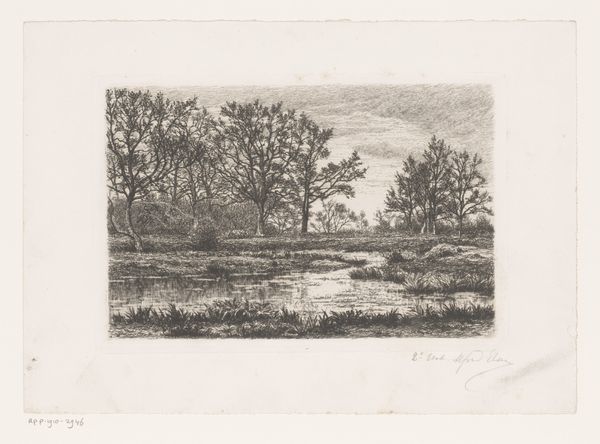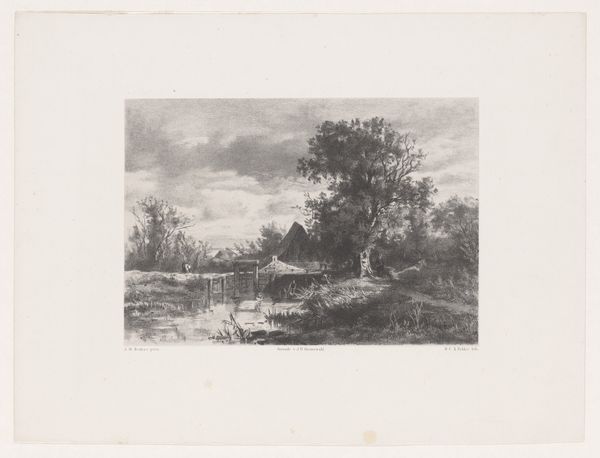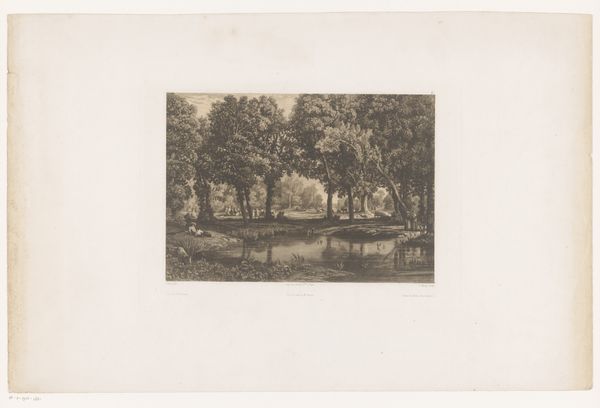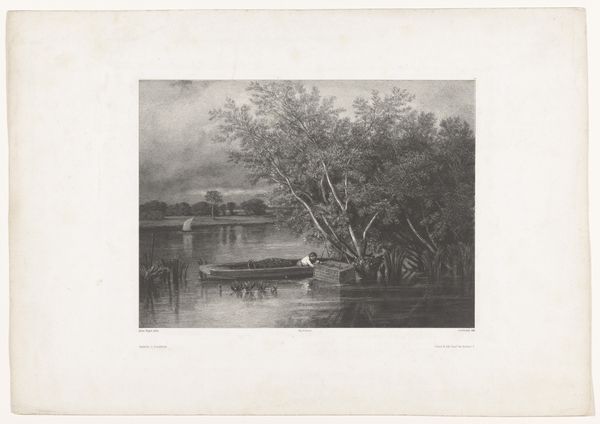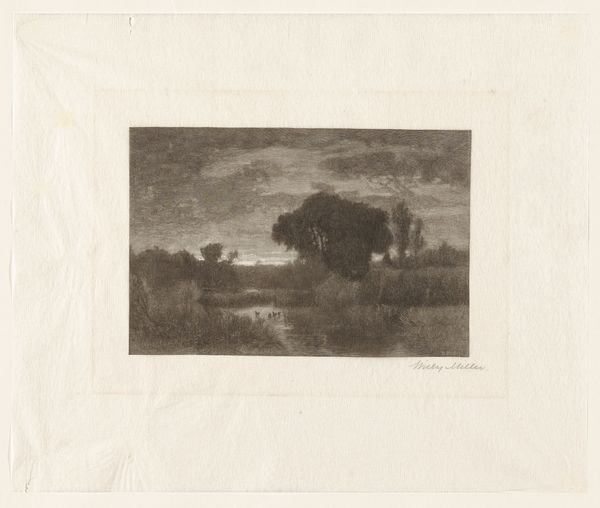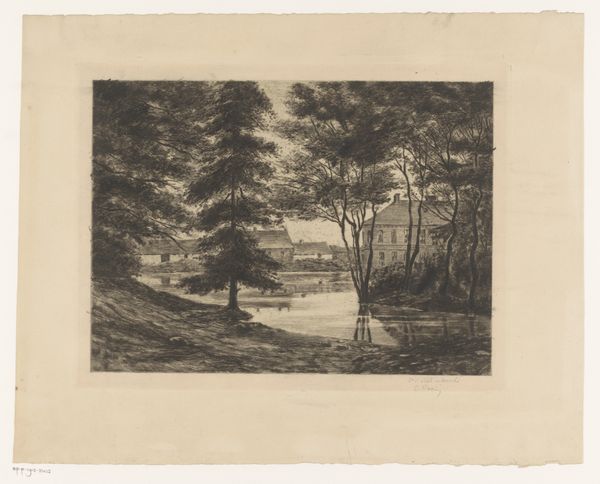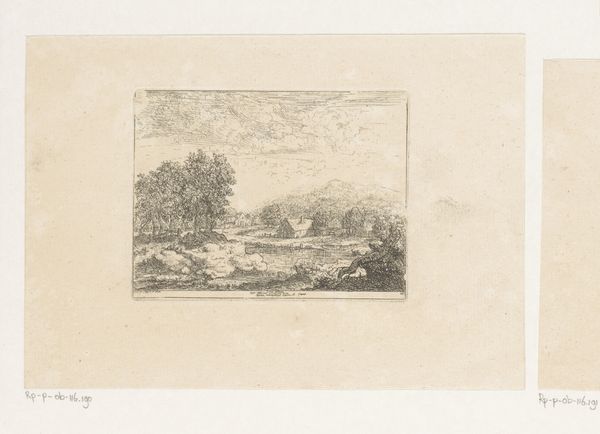
print, etching
# print
#
etching
#
landscape
#
realism
Dimensions: height 323 mm, width 449 mm
Copyright: Rijks Museum: Open Domain
Editor: So, here we have Jules Michelin’s "Gezicht op een vijver," or "View of a Pond," possibly from 1864. It’s an etching, so a print. It has a subdued, almost melancholic mood, with all these dark, muted tones. What stands out to you? Curator: Immediately, I’m drawn to how this "realistic" landscape aligns with the rise of Realism, but complicates its often stark social commentary. It invites a consideration of class and labor within the aesthetic of nature. How does the artist’s perspective, likely from a place of privilege, shape our understanding of this pond? Who has access to such leisurely views? Editor: That's a great point. I was just seeing it as a peaceful scene, but thinking about access really shifts things. Is the density of the trees and the murky water somehow symbolic? Curator: I think we need to consider it beyond mere representation. Michelin utilizes the language of landscape to explore societal themes. The heavy, oppressive sky perhaps mirrors the societal burdens of the time. Or the lack of a clear path might reflect anxieties regarding societal progress. Editor: It’s interesting how what appears to be just a realistic rendering of nature can become a site for such rich cultural and political interpretation. Curator: Exactly! And it invites us to contemplate whose narratives are prioritized when we discuss "nature" or "beauty." Is there an implicit power dynamic at play in Michelin's gaze? How does he reinforce or subvert expectations? Editor: That gives me a lot to think about, reframing the familiar to reveal these power structures is incredibly insightful. Curator: And hopefully inspires you to engage in similarly critical inquiries when considering other works of art, challenging preconceived notions.
Comments
No comments
Be the first to comment and join the conversation on the ultimate creative platform.
